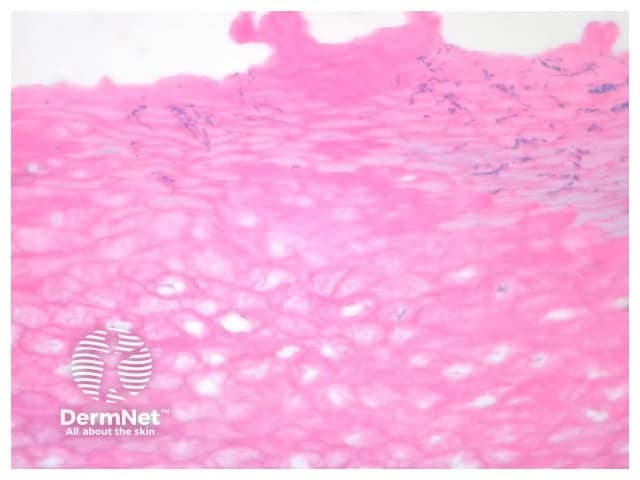Main menu
Common skin conditions

NEWS
Join DermNet PRO
Read more
Quick links
Infections Diagnosis and testing
Author: Assoc Prof Patrick Emanuel, Dermatopathologist, Auckland, New Zealand, 2013.
The agent responsible for erythrasma is Corynebacterium minutissimum, a diphtheroid bacterium.
Erythrasma can easily be missed on routine histopathologic sections as the inflammatory response is typically minimal. When biopsied, well established lesions will reveal a sparse superficial perivascular infiltrate of lymphocytes. There is typically orthokeratosis within which blue-staining organisms in the form of delicate rods and filaments can be found on routine Haematoxylin-Eosin stain (figure 1).

Figure 1
Gram stain of erythrasma shows delicate Gram-positive rods and filaments in the cornified layer. These can usually easily be seen on routine Haematoxylin-Eosin stains (figure 1)
Pityriasis versicolor (sometimes called tinea versicolor) — Malassezia (formerly known as Pityrosporum) yeasts colonise the stratum corneum and also fail to elicit much of an epidermal response. The yeast forms are larger than Corynebacteria and fail to stain with gram stain.
Normal skin — The causative organisms can be easily overlooked.
Pitted keratolysis — This may be indistinguishable from erythrasma without clinical correlation.